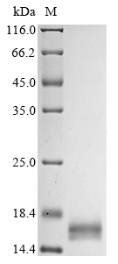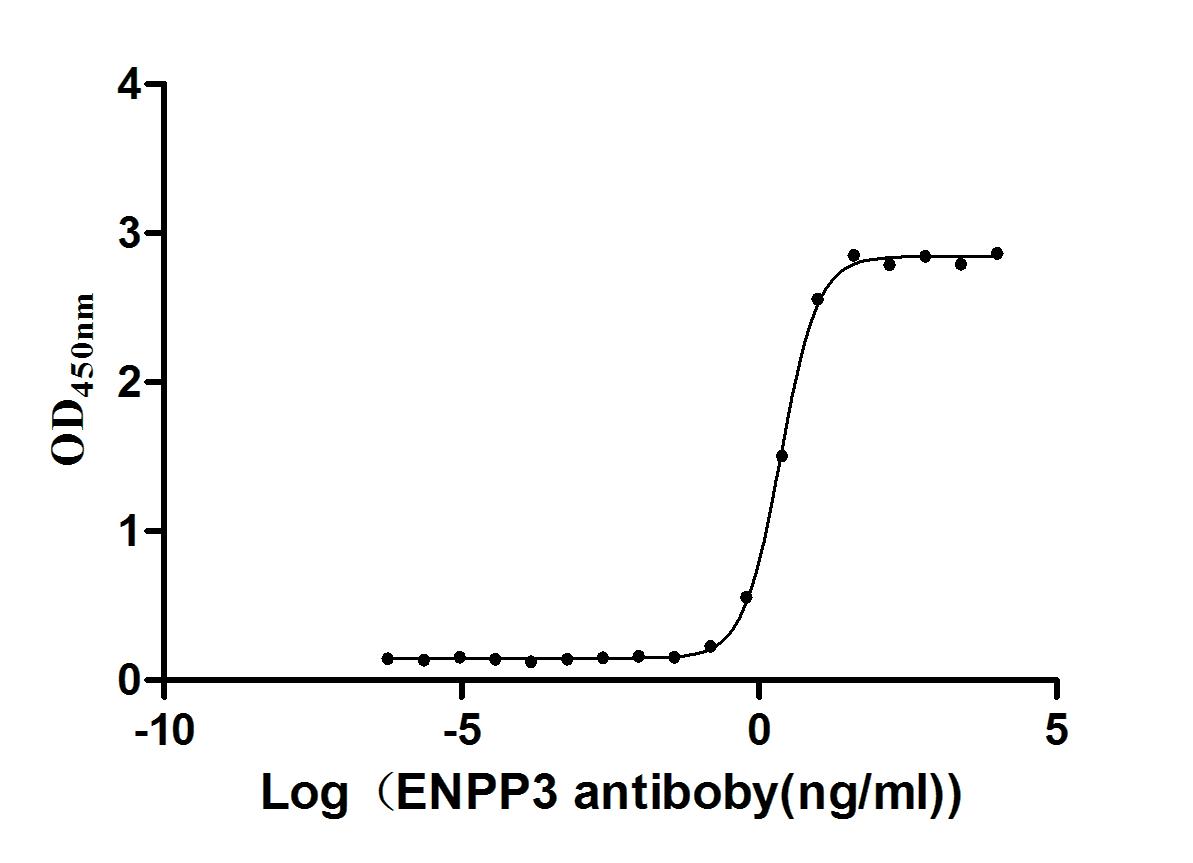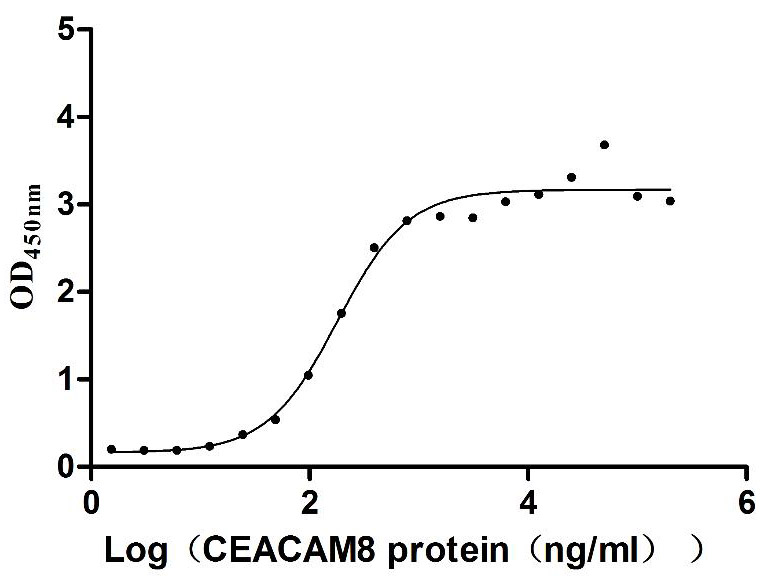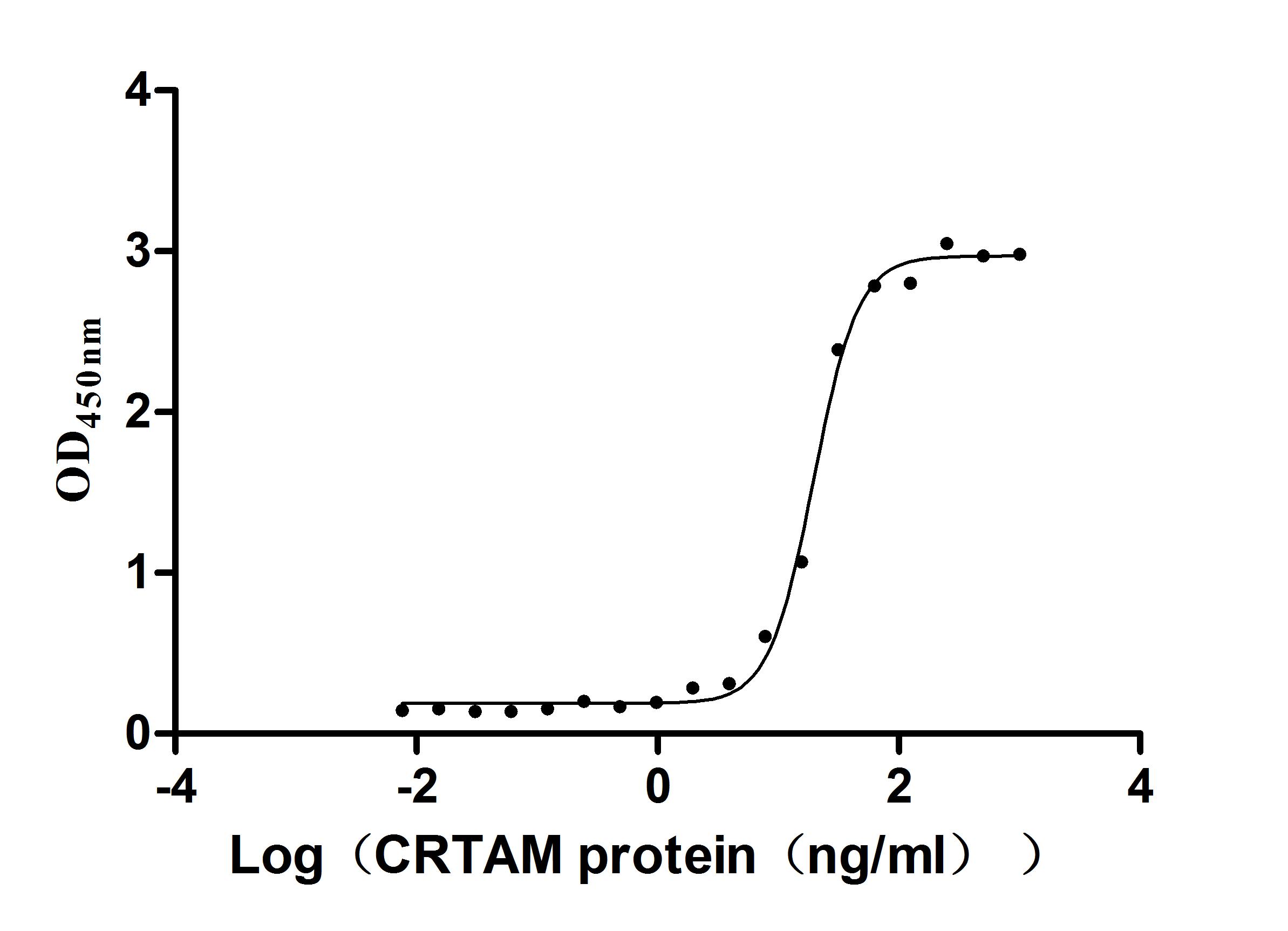Recombinant Mouse Angiogenin (Ang)
In Stock-
货号:CSB-YP001703MO
-
规格:¥2616
-
图片:
-
其他:
产品详情
-
纯度:Greater than 90% as determined by SDS-PAGE.
-
基因名:Ang
-
Uniprot No.:
-
别名:(Angiogenin-1)(Ribonuclease 5)(RNase 5)
-
种属:Mus musculus (Mouse)
-
蛋白长度:Full Length of Mature Protein
-
来源:Yeast
-
分子量:15.8 kDa
-
表达区域:25-145aa
-
氨基酸序列QDDSRYTKFLTQHHDAKPKGRDDRYCERMMKRRSLTSPCKDVNTFIHGNKSNIKAICGANGSPYRENLRMSKSPFQVTTCKHTGGSPRPPCQYRASAGFRHVVIACENGLPVHFDESFFSL
Note: The complete sequence including tag sequence, target protein sequence and linker sequence could be provided upon request. -
蛋白标签:N-terminal 6xHis-tagged
-
产品提供形式:Liquid or Lyophilized powder
Note: We will preferentially ship the format that we have in stock, however, if you have any special requirement for the format, please remark your requirement when placing the order, we will prepare according to your demand. -
缓冲液:If the delivery form is liquid, the default storage buffer is Tris/PBS-based buffer, 5%-50% glycerol. If the delivery form is lyophilized powder, the buffer before lyophilization is Tris/PBS-based buffer, 6% Trehalose.
-
复溶:We recommend that this vial be briefly centrifuged prior to opening to bring the contents to the bottom. Please reconstitute protein in deionized sterile water to a concentration of 0.1-1.0 mg/mL.We recommend to add 5-50% of glycerol (final concentration) and aliquot for long-term storage at -20°C/-80°C. Our default final concentration of glycerol is 50%. Customers could use it as reference.
-
储存条件:Store at -20°C/-80°C upon receipt, aliquoting is necessary for mutiple use. Avoid repeated freeze-thaw cycles.
-
保质期:The shelf life is related to many factors, storage state, buffer ingredients, storage temperature and the stability of the protein itself.
Generally, the shelf life of liquid form is 6 months at -20°C/-80°C. The shelf life of lyophilized form is 12 months at -20°C/-80°C. -
货期:3-7 business days
-
注意事项:Repeated freezing and thawing is not recommended. Store working aliquots at 4°C for up to one week.
-
Datasheet & COA:Please contact us to get it.
相关产品
靶点详情
-
功能:Binds to actin on the surface of endothelial cells; once bound, angiogenin is endocytosed and translocated to the nucleus. Stimulates ribosomal RNA synthesis including that containing the initiation site sequences of 45S rRNA. Cleaves tRNA within anticodon loops to produce tRNA-derived stress-induced fragments (tiRNAs) which inhibit protein synthesis and triggers the assembly of stress granules (SGs). Angiogenin induces vascularization of normal and malignant tissues. Angiogenic activity is regulated by interaction with RNH1 in vivo.
-
基因功能参考文献:
- ANG plays a non-cell-autonomous role in regulation of hematopoiesis by simultaneously preserving hematopoietic stem/progenitor cells stemness and promoting myeloid-restricted progenitor cell proliferation. PMID: 27518564
- angiogenin and ILK signaling pathway plays a pivotal role in mediating the inhibitory effects of RI on melanoma cells growth PMID: 24769129
- Our data provide new insights into the paracrine activities of angiogenin in the nervous system, and further highlight the critical role of non-neuronal cells in the pathogenesis of Amyotrophic lateral sclerosis PMID: 22496549
- RNase 4 and RNase 5/ang 1 are unique among the RNase A ribonuclease genes in that they maintain a complex gene locus that is conserved across species with transcription initiated from tissue-specific dual promoters followed by differential exon splicing. PMID: 15722482
- ANG plays an important role in neurite pathfinding and this has implications for amyotrophic lateral sclerosis. PMID: 17468498
- Angiogenin mRNA was expressed in murine skin in a hair-cycle dependent manner, with maximum levels observed at the late anagen. PMID: 18936943
- All three types of the ANG inhibitor suppress rRNA transcription of the prostate luminal epithelial cells and inhibit AKT-induced PIN, indicating an essential role of ANG in AKT-mediated cell proliferation and survival. PMID: 19258415
- Murine angiogenin mRNA and protein are upregulated in motoneurons in response to hypoxia, and that Hypoxia-Inducible Factor 1 is sufficient and required to upregulate angiogenin expression during hypoxia. PMID: 19444281
显示更多
收起更多
-
亚细胞定位:Cytoplasmic vesicle, secretory vesicle lumen. Secreted. Nucleus, nucleolus.
-
蛋白家族:Pancreatic ribonuclease family
-
数据库链接:
Most popular with customers
-
Express system: Mammalian cell
Species: Homo sapiens (Human)
-
Recombinant Human Carcinoembryonic antigen-related cell adhesion molecule 6 (CEACAM6) (Active)
Express system: Mammalian cell
Species: Homo sapiens (Human)
-
Recombinant Human Cell adhesion molecule 1 (CADM1), partial (Active)
Express system: Mammalian cell
Species: Homo sapiens (Human)















